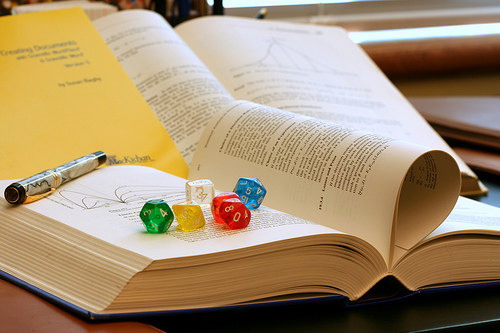Overview:
The probability of an event is determined by how likely that event is to happen. If an event is impossible, it has a probability of 0. If an event is certain to happen, it has a probability of 1. Probabilities are usually expressed as fractions, as decimals, or as percentages.
What Is an Event?
An event is a set of outcomes. There are only two possible outcomes if a coin is tossed. It can either come up heads or come up tails. In contrast, if only one die is tossed once, there are six possible outcomes — either a 1,2,3,4,5,or 6. If one card is chosen out of a deck of standard cards, there are 52 possible outcomes.
What Is a Random Outcome?
An outcome is considered random if every outcome in a set is equally likely. It is very important that specific instances happen randomly, and that the die, coin, or card is fair or unbiased. Experimenters go to a great deal of trouble to make sure that subjects within an experiment are assigned to conditions randomly, so that any possible conditions are equally likely to occur. For the purposes of this introduction, it means that it would be equally possible to get any value within the range of possible outcomes.
What Is the Probability of an Outcome?
The probability of an event is the ratio of successful outcomes to possible outcomes. For example, when one die is tossed once, there if a probability of 1/6 that the toss will be a 4. Only one outcome is successful out of 6 possibilities. Suppose the successful outcome is that the toss will result in an even number, a 2, 4, or 6. Then 3 outcomes are successful out of 6 probabilities, or there is a probability of 3/6.
How Does a Second Outcome Affect Probability?
If both outcomes are independent of each other, that means that one instance has no effect on the other. (In technical terms, that is known as “sampling with replacement”. ) Given a fair pair of dice, if one rolls the first die and gets a 6, the probability is 1/6. What is the probability that the second roll will be a 6 also? For each of the 6 options, there are 6 more options, so the probability would be 1/6 ∙1/6 = 1/36.
Interested in math tutoring services? Learn more about how we are assisting thousands of students each academic year.
SchoolTutoring Academy’s is the premier educational services company for K-12 and college students. We offer tutoring programs for students in K-12, AP classes, and college. To learn more about how we help parents and students in Reno, NV visit: Tutoring in Reno, NV



